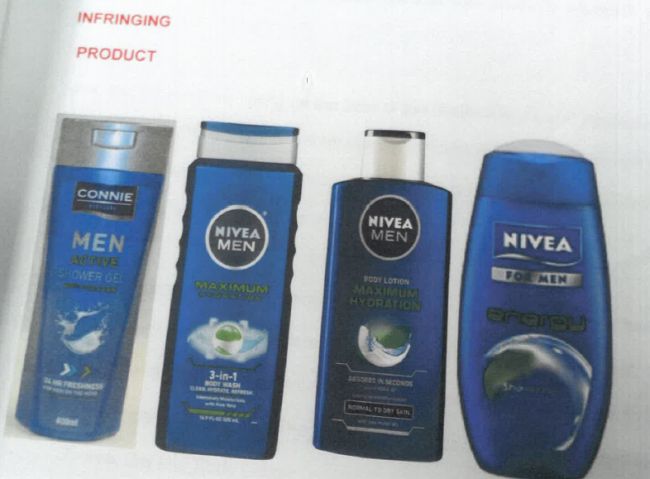Not only must a manufacturer of products consider whether the packaging would constitute trade mark or copyright infringement, but also whether the get-up of the product will be too similar to that of a competitor.
In a recent case Nivea sued the producers of a shower gel product which was branded CONNIE. The products relevant to this matter are copied below, with the product complained of shown on the left.

Nivea complained that the CONNIE get-up borrowed from its stable of distinctive logos and features, both past and present, so as to create a composite that is deceptive to the average consumer.
Central to Nivea's case is a comparative pictorial exercise done in relation to the CONNIE product and the three recent get-ups of Nivea's shower gels (as shown in the image above).
The court compared the products, stating that the CONNIE get-up has the following features which also appear in the three NIVEA get-ups:
- a wave label that has a similar colour as background (the respondent argued it was purple but, the court found it similar in hue to a deep blue), a silver border, and the name CONNIE in white block capital characters;
- the prominent use of blue, white, and silver in the get-up generally, including the use of a deep blue plastic container of a similar hue to that of the deep blues used in the NIVEA products and the use of a silver lid;
- the prominent use of bright green lettering in the word "ACTIVE" which is presumably meant to evoke a sense of vitality that is similar to the use of similar bright green lettering on the NIVEA products in words such as "MAXIMUM HYDRATION" and "ENERGY" which words also appear on some of the range in the current get-up in orange lettering;
- the use of a splash/wave like graphic representation, which has rounded features and is of a similar size, appearance, and position on the get-up; and
- the use of a container of a similar height, width, and volume as the latest get-up of NIVEA shower gel.
The court referred to previous cases, stating that when you are looking at passing off by imitation of get-up, you have to assume that the consumer is neither overly careful nor overly cautious, but is an average purchaser, who has a general idea in his mind's eye of what he means to get but not an exact and accurate representation of it.
Nor will the customer necessarily have the advantage of seeing the two products side by side. Nor will he be alerted to single out fine points of distinction or definition. A certain measure of copying is allowed as it has always been accepted that there can be no monopoly on get-up.
Also different names, in this case NIVEA vs CONNIE in otherwise similar get-ups does not necessarily exclude the probability of deception.
Although the CONNIE product was not in relation to the NIVEA product used at the time, the court held that the hallmarks of its past get-ups have created impressions and associations that linger in the minds of consumers. The use of these features alone or, as in this instance, as a composite, are plainly evocative of the applicant's brand.
As a result, when creating new packaging it would be best to steer clear of any competitor product packaging to avoid being accused of being a copy-cat.
The content of this article is intended to provide a general guide to the subject matter. Specialist advice should be sought about your specific circumstances.

